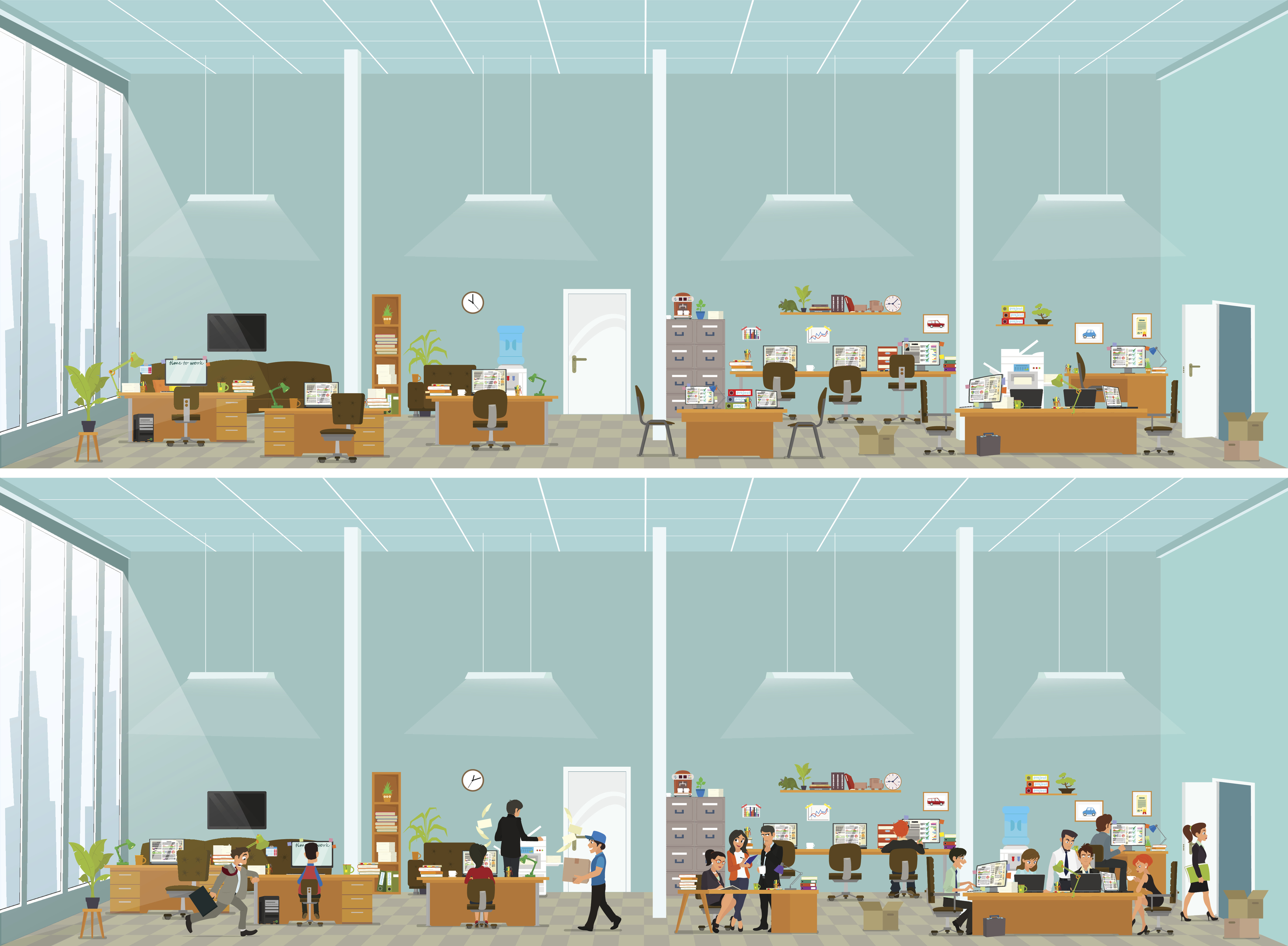Open office settings have taken over corporate America over the last decade. In fact, about 70 percent of U.S. offices have no or low partitions, according to the International Facility Management Association.
Silicon Valley has been the leader in this trend, touting that lack of walls increases collaboration, creativity, and innovation. And after all, who wouldn’t want to be like Google or eBay? Companies in all industries followed and now have broad floor plans with shared work spaces.
However, this movement is coming with some unexpected consequences: visual noise. The open office brings with it constant movement of coworkers and increased social interaction. Even when a worker isn’t participating in a conversation, there’s always something in their line of sight. From being distracted by a colleague’s constant runs to the bathroom to the boss who seems to be circling the office, it’s hard to keep focused on real work.
What walls used to block out is now front and center during the entire work day. This visual noise is killing focus, and productivity suffers. It arguably does too good of a job fostering collaboration, because now employees are constantly interacting, even when they don’t need or want to be.
If visual noise is a problem for you, you’re not alone. Take charge and reduce visual noise with a few easy, proactive strategies:
Go green: We’re not talking about being eco-friendly. Plants are an easy and effective way to put a little privacy back into open office settings without much disruption to the interior design. Work with your boss or team to add plants strategically so everyone benefits. Bonus: better indoor air quality!
Go to privacy spaces: Open-office workers should have reprieve from visual and other stimuli when they really need to drill down. If your plan doesn’t currently have these areas, inquire about adding them. Something as simple as a small, rarely used meeting room is useful.
Upgrade computer screens: Larger computer screens can grab more of your visual attention so fidgety coworkers are less likely to catch your eye. Try an oversized monitor or even a curved computer screen that takes up more of your field of vision.
Keep decor basic: If you have any input on office design, try to keep decor basic. Bright colors and busy patterns tend to draw the eye. What’s more, limit the decor in your own office space and encourage others to do the same. You don’t want to constantly be distracted by your neighbor’s rotating art gallery.
Consider a move: Your distaste for the open-office design likely won’t inspire a complete overhaul, but if your area seems to be particularly busy, meet with your boss to inquire about a move. Maybe a different location will be calmer so you can experience fewer visual distractions. Moving to the end of a row or away from a meeting room can help tremendously.









